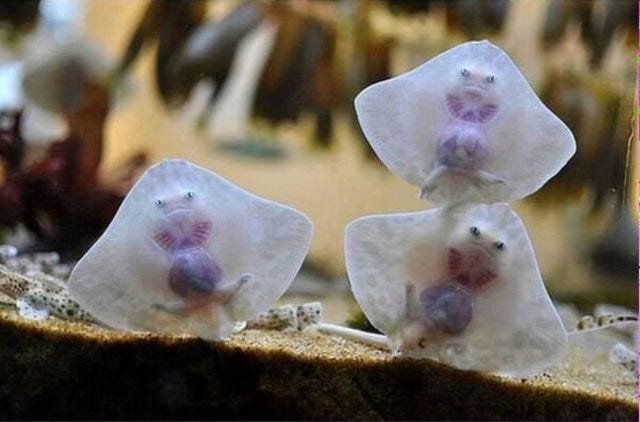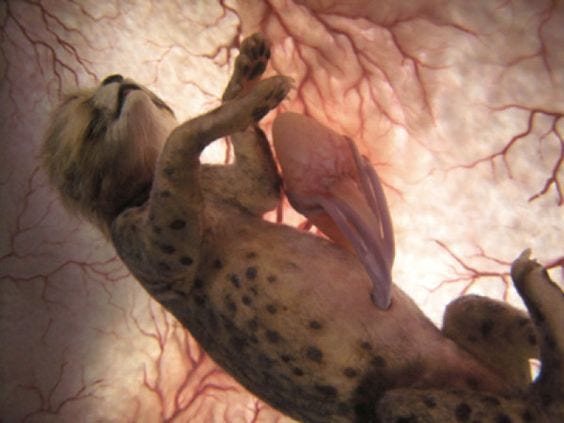The beauty of the natural world
One of the most visible inspirations for my fantasy, The Bond, is the natural world. You can see my idea board here. I am constantly surprised, delighted, weirded out, and generally astonished at the diversity and beauty of even the most common creatures.

On my board, for example, is a photo of baby stingrays (which someone described as ravioli stuffed with tiny damned souls). Looking at creatures then invites to look deeper at plants, weather, geology -- where even the dirt under our feet can hold surprises.
I was in Duke Forest recently and our guide pulled out a core sample of the ground at that moment beneath our feet. There were layers of soil each with a different color. The guide explained that there was an absent layer, evidence of a style of farming in the mid-nineteenth century that failed to properly control erosion. That meant that an entire blanket of topsoil, necessary for healthy crops, was missing. The culprit was probably tobacco, which can be very hard on soil, especially when it's not rotated with complementary crops.

I found this photo of a fetal cheetah from the series "Animals in the Womb," produced by National Geographic. They are eerily beautiful and show these creatures -- and therefore us -- in such vulnerability. From this photo, I devised a whole new element in my world of the Weave. I created a methodology for how this advanced culture creates new, genetically modified life. The uterus became a sac and the liquid inside it, what is normally amniotic fluid, a substance called nektar.
Here is one of my characters from the third book in my trilogy -- still under construction -- birthing from the sac.
I first opened my eyes in lovely nektar. The same nektar filled my lungs and floated my body. I could move my feet and hands through the nektar and rub my slippery fingerpads together. I gazed at my skin, assuming I was the same color as what surrounded me, held me.
The taste was sweet though I did not know it as sweetness. I had nothing to compare it to. Sweetness and that golden color were all I knew.
“I” was not yet aware of myself as a thing. A living being. By that I mean that I was me, yes, I grew in that translucent sac, hung (I learned later) from a metal hook. While I curled there, I had no sense of myself, no “I,” no them: me and the shapes around me, shapes that moved beyond where I could touch.
In the sac, my tender ears captured sounds, through the sac skin and the nektar, muffled and slow. Sometimes, I saw what I thought were eyes peering at me, always in pairs: two, six, sometimes twice that number. I thought these were eyes because I felt seen. I trembled. Those eyes blinked just like mine.
In that sac, I felt peace. I wanted nothing more than what was. Where I was. What I was. No: there was no wanting at all, no sense that I was not already living all that there was of life. In that, I was like every other creature suspended in that laboratory, as yet unborn. No one, I later came to understand, thinks of themselves as being alive, of being something present in the world, until they get their first inkling of death. You learn you are alive the moment you learn you will one day die.
As a writer, I never know where or when inspiration will strike!
If you enjoyed this newsletter, please feel free to recommend it to others. Finally, check out this interview about The Bond with fellow Vermont College of Fine Arts grad Jim Hill (who has his own book, Duff Parker and the Downfall of the Dystopiad, coming out in Fall 2019.


